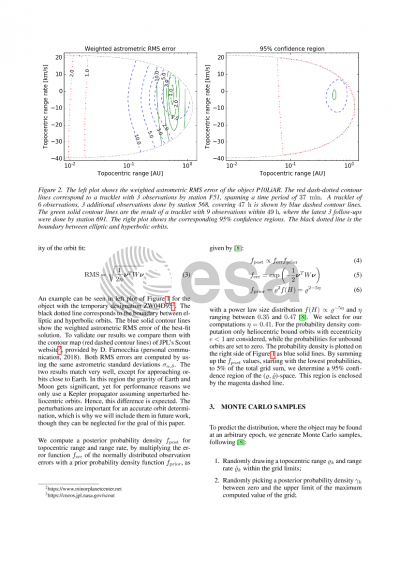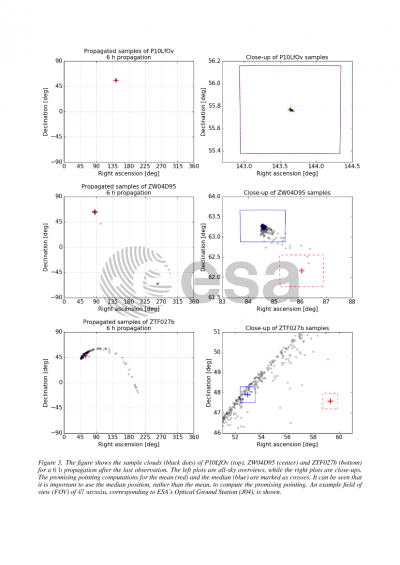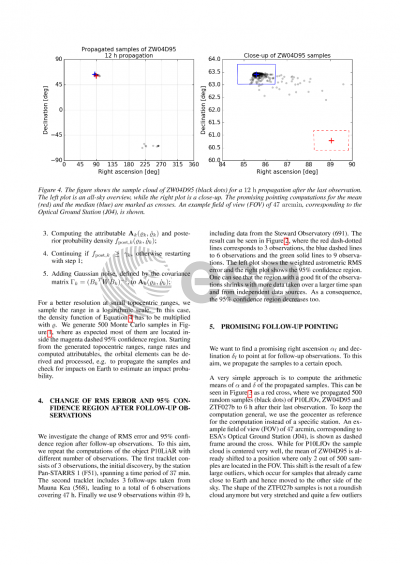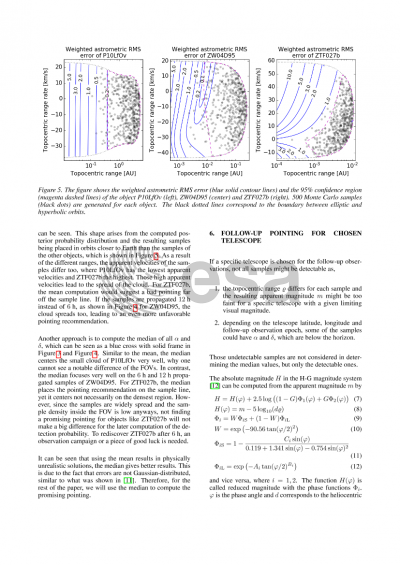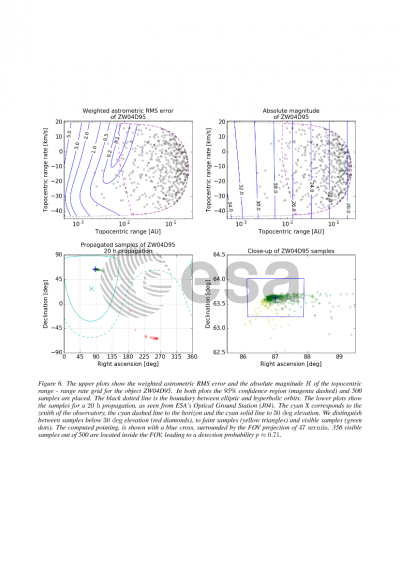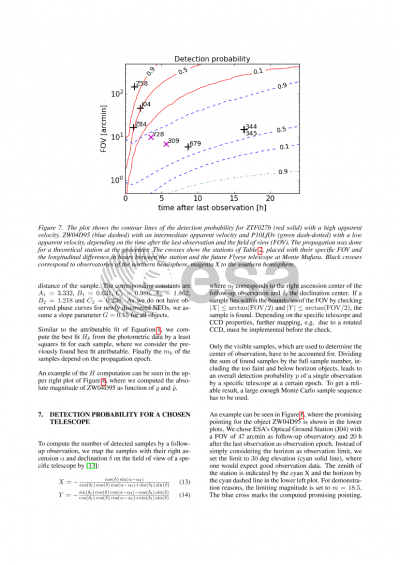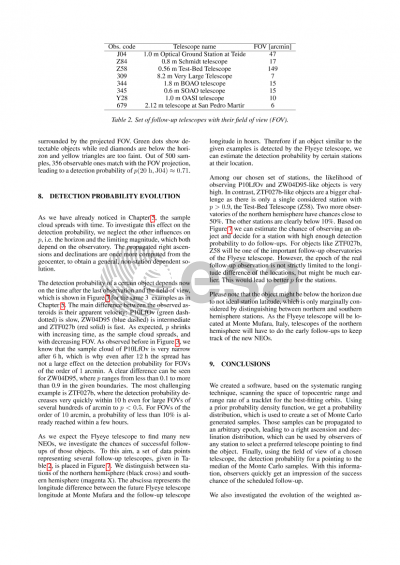Document details

Abstract
When telescopes detect new objects in the sky immediate orbit determination needs to be performed to find out their origin, to determine the probability of an Earth impact and possibly also to estimate the impact region on Earth. That applies equally to space debris and to NEOs. In 2003 it was a third stage of Apollo 12, that was detected to approach the Earth, in 2015 WT1190F, possibly the injection stage of the 1998 Lunar Prospector mission, impacted close to Sri Lanka and the asteroids 2008 TC3, 2014 AA and 2018 LA impacted the Earth less than a day after they were detected.
The Fly-eye telescope is expected to revolutionize the effort of predicting potential asteroid or deep space debris impacts hazards. Its large field-of-view (6.7 deg by 6.7 deg), combined with an optimized sky survey strategy, will allow the coverage of almost a full hemisphere every two observing nights. Each area of the sky is visited four times, collecting information on the possible movement of objects brighter than 21 mag.
The main purpose of the sky survey is the discovery of uncatalogued near-Earth objects with the aim of deriving their orbital elements in order to calculate their probability (if any) to impact the Earth. For such newly discovered objects, the observed orbit arc (the so-called tracklet) is very short, with just four reliable observables: right ascension, declination, and the rate of change of right ascension and declination. For this reason, classical Gaussian orbit determination cannot be applied until further follow-up observations of the object are obtained.
However, in order to find the object a few or even many hours later, is it necessary to put some constraints on the region of the sky where to observe. For this goal, we are implementing the technique of systematic ranging in our system where a raster scan in the poorly-constrained space of topocentric range and range rate is performed. As an output, we can then generate a region of the sky where the body is located within a given probability threshold.
Preview


